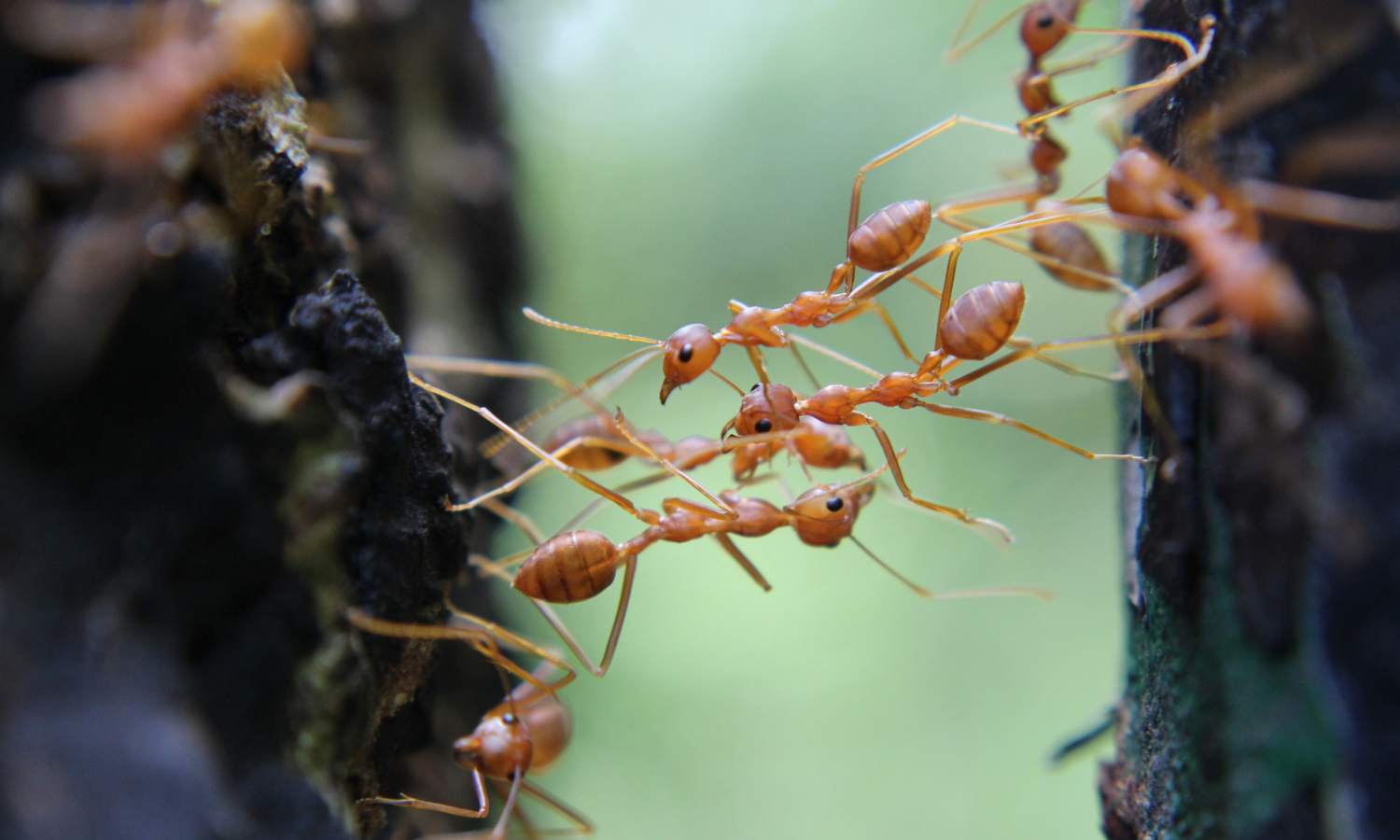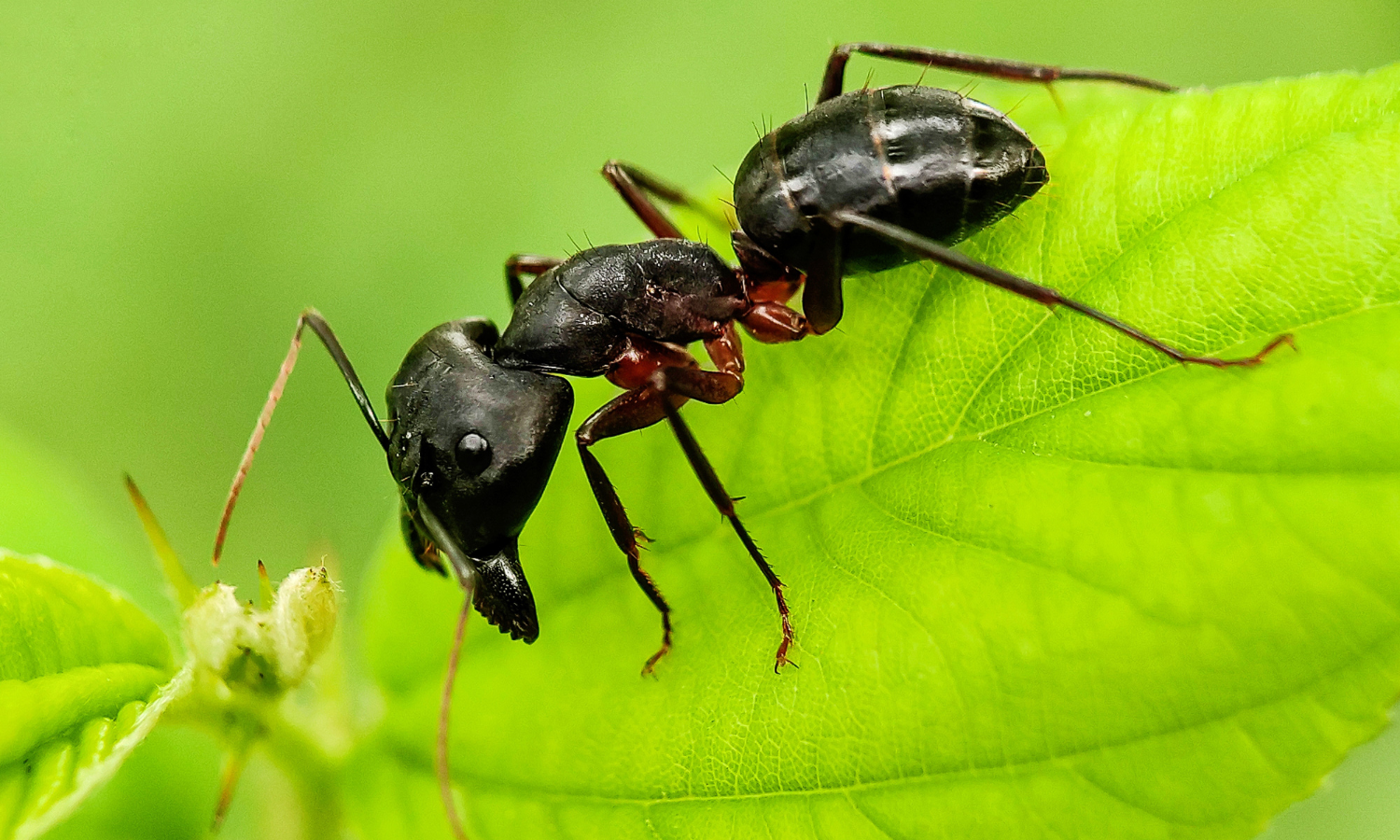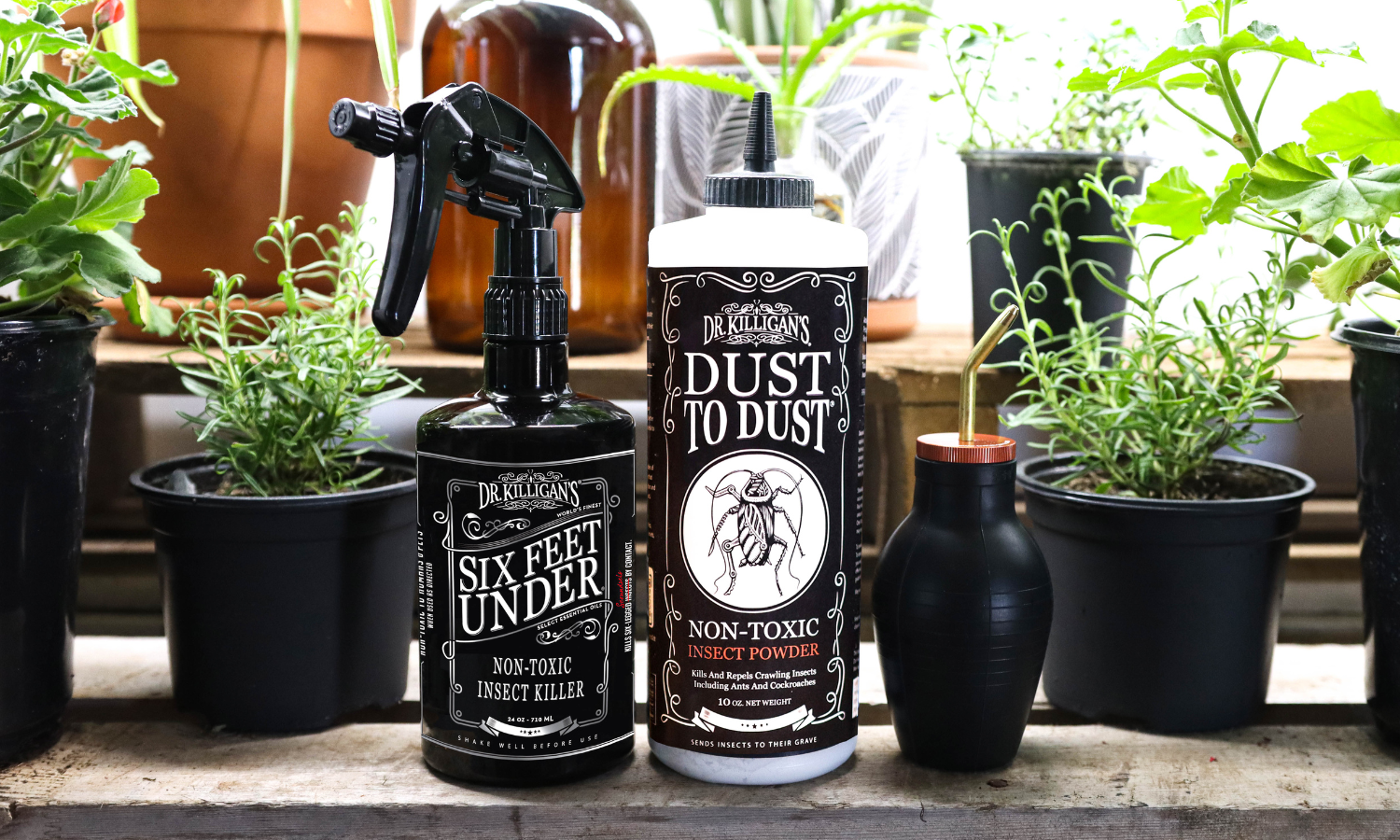Ants are one of the hardest working insects. They work long hours and die pretty young. (Most worker ants burn out and die after about a year.) They’re great at building and protecting their homes.
If they decide to establish a presence in your house, you’ll quickly have an infestation on your hands. To prevent an ant infestation, it's important to understand these creatures, including their social structure and lifestyle.
Different types of ants (including sugar ants)
There are thousands of species of ants across the world, all social creatures that live in colonies and share similar habits. In the United States, "sugar ant" is a colloquial term used to describe any ant attracted to sweets, which can include both 'outdoor' sugar ants and various 'indoor' sugar ants. Common indoor types are pharaoh ants, pavement ants, Argentine ants, carpenter ants and odorous house ants, which are particularly known for their attraction to sugary foods.
This article will explore the behaviors, habitats and challenges of three types of these sugar ants—odorous house ants, pavement ants and carpenter ants—as well as discuss fire ants, a distinctly different species known for its aggressive behavior and painful stings.
Odorous house ants
Odorous house ants, small but persistent pests, are notably attracted to sweet foods. They often gather around sources of sugar such as spilled soda, candy and ice cream, and are easily identified by the odor they emit when crushed.

Looks: These ants are small, about one-sixteenth to one-eighth inch long. They are usually dark brown or black in color—which might not make them stand out compared to other darker-colored ant species. However, a distinguishing feature is their unevenly shaped thorax when viewed from the side; unlike some other ant species, the upper surface of the thorax is not smoothly rounded. This, along with their tendency to emit a noticeable, sweet odor when crushed (reminiscent of rotten coconuts)—as aforementioned—helps differentiate them.
Colony: Odorous house ant colonies can vary greatly in size, typically ranging from several hundred to over 100,000 members. These colonies have the potential to grow rapidly, especially when there are plentiful food sources available, which can lead to the formation of supercolonies. This characteristic allows them to quickly exploit food sources and become a significant nuisance in affected areas.
Entrance: They can make their way into homes through very small openings, including cracks in the foundation or gaps around windows and doors.
Beware: When odorous hosue ants are disturbed, especially by insecticide sprays, they can quickly relocate and split into multiple satellite colonies. This survival tactic can complicate efforts to control their population, as it allows them to spread throughout the home.
Pavement ants
Pavement ants—known for their stinging and biting behaviors—have a strong preference for greasy foods—though they are not picky eaters and will consume most human foods. They are particularly attracted to meats, oils and fats, using their keen sense of smell to locate these items from distances up to 30 feet away.
Their strong olfactory abilities allow them to follow scent trails left by other ants, leading them directly to sources of food. This sensitivity makes them particularly adept at finding and exploiting food sources in and around homes and buildings, establishing foraging trails to access these resources efficiently.

Looks: Pavement ants are typically dark brown to black in color, with bodies measuring about one-sixteenth to one-eighth inches long. They have pale legs and antennae, which contrast with their darker bodies. Their thorax is unevenly shaped, and they possess two spines on the back, along with grooves on the head and thorax.
Colony: These ants usually form moderately large colonies, ranging from 3,000 to 5,000 members. In urban areas, their colonies can merge, forming supercolonies that host tens of thousands of ants, leading to significant infestations.
Entrance: These ants often enter homes through cracks in foundations and gaps around windows or doors, establishing well-defined trails from their nests to accessible food sources inside.
Beware: Once inside, pavement ants are persistent and can quickly become a nuisance. Watch for their characteristic foraging trails leading from outside directly into your kitchen or pantry areas, signaling an active infestation.
Carpenter ants
Carpenter ants are among the largest ants encountered in homes and are known for their destructive habits. Unlike other ant species that might raid your pantry, carpenter ants are primarily wood destroyers.
They burrow into damp or damaged wood to create intricate tunnel systems that can cause structural damage over time. While they don't eat the wood, they remove it to build their nests, often leading to hidden infestations that can go unnoticed until significant damage is done. These characteristics make understanding and controlling carpenter ants crucial for homeowners.

Looks: Carpenter ants are distinctively large, typically ranging from one-fourth to one-half inch in length. They usually display a black or dark brown coloration, though some species have reddish or yellowish hues. One of their most distinguishing features is the smooth, rounded thorax when viewed from the side, and a single node, or "bump," that separates their thorax from the abdomen, giving them a segmented appearance.
Colony: Carpenter ants build smaller colonies initially, which can grow to include thousands of workers. Their colonies are unique as they can establish satellite nests apart from the main colony to enhance their reach and resource gathering.
Entrance: They gain entry through wet, damaged wood or via cracks around doors and windows. These invaders can also enter through shrubs, overhead wires or tree branches that touch your home.
Beware: Issues arise when a colony matures, producing winged (yes, wings) male and female alates. These winged, flying ants will suddenly appear on your window panes. When this happens, you can be sure of two things: 1) You have a mature colony inside of the walls of your home; and 2) they’re about to explode in numbers.
Fire ants
Fire ants are easily recognized by their aggressive behavior and painful stings. They are omnivores, meaning they will eat both plant and animal materials, but they are especially drawn to meats and sweet substances.
Fire ant colonies build large, visible mounds in the ground, particularly in open areas to catch the sun's warmth. During severe weather conditions like extreme heat, drought, or torrential rains, they may seek shelter indoors, which can make them a significant pest problem in affected homes.

Looks: These ants are small, averaging about one-eighth to three-eighths inches in length. Their bodies are segmented with a distinct, almost shiny appearance, and they possess a stinger which is not always immediately visible. The most striking feature is their bright red to reddish-brown color, which is where they get their name. This coloration, combined with a copper brown head and a darker abdomen, helps in distinguishing them from other ant species.
Colony: Fire ant colonies can become quite expansive, often housing up to 250,000 workers when mature. These colonies are highly organized and aggressive, capable of rapid expansion and defense of their territory.
Entrance: They can enter homes through the smallest openings, such as cracks in the foundation, gaps around doors and windows or vents.
Beware: Fire ants are highly aggressive and will sting humans and animals unprovoked, with the ability to sting multiple times. Each sting injects a venom that can cause significant pain and, in allergic individuals, severe reactions. The presence of fire ants indoors can pose a health risk, especially for those with sensitivities to insect stings.
The life cycle of an ant
Like all social insects (i.e. bees, wasps and hornets), ants undergo a metamorphosis in four life stages: egg, larvae, pupa and adult. The queen mates, nests, lays eggs and then produces her workers, creating a colony of her own. Even as the colony grows and her work appears done, the queen remains on her throne. She is essential for normal colony life, as the chemical messages she produces controls the activities of all workers in the nest.
Now, let’s talk about that life cycle:

Egg: Ant eggs, tiny and roughly the size of a pen dot, grow rapidly. These eggs develop into either female workers if fertilized or male ants if unfertilized.
Note: Ant reproductive rates vary by species; for example, odorous house ants lay up to 30 per day, pavement ants lay about 5-20 eggs daily, carpenter ants around 15-20 and fire ants can lay up to 1,500 eggs per day during their peak season.
Larvae: After hatching, they resemble maggots, having no eyes or legs. They are cared for by worker ants and molt several times as they grow. This stage typically lasts between seven and 14 days.
Pupae: Some species spin protective cocoons during this stage; others do not. Either way, the metamorphosis include the forming of an ant’s legs and antennae, which are folded against its body as it grows. This stage will last a few weeks.
Adult: Once the pupal stage is complete and their exoskeletons have hardened—a process that takes only a few hours—adult ants are ready to take on tasks assigned based on the colony’s needs and their age. New workers typically focus on expansion, helping to extend the colony’s reach and infrastructure. Meanwhile, older ants undertake maintenance roles, supporting day-to-day operations and managing resources. This division of labor ensures that the colony remains efficient and responsive to its environment.
Ant jobs and social structure
Ants are highly social insects, living in colonies that can range from just a few dozen to millions, depending on the species. These colonies are organized into castes with specific roles:
Workers: Worker ants are female and do not reproduce. Their jobs are crucial and include tending to the queen, expanding the nest, caring for the eggs and foraging for food. Tasks among workers are typically divided based on the age of the ant—newly hatched workers stay close to the nest, while older workers venture out to forage.
Males: Males are born from unfertilized eggs and have a singular purpose—mating with the queen. They have a very short lifespan; after mating, they die.
Queens: The queen's primary role is to lay eggs, ensuring the future of the colony. Once a queen starts her own colony, she sheds her wings as they are no longer needed. She may live for 15 years or more, during which she remains in the nest, with all her needs cared for by the worker ants. The queen is the heart of the colony; when she dies, the colony typically collapses unless there are other reproductive females ready to take her place.
How to rid my home of ants
Noticing ants in your home? These invaders can range from being a simple nuisance to causing significant structural damage, as seen with carpenter ants.
Here's how to effectively manage these pests:

Immediate action: For quick, on-contact ant elimination, use Dr. Killigan’s Six Feet Under Plant-Powered Insect Spray. This all-natural, non-toxic spray provides an immediate solution to halt ant activity in its tracks.
Long-term control: For a more lasting solution, especially against larger colonies, employ Dr. Killigan's Insect Buster Bulb Duster filled with Dust to Dust Plant-Powered Insect Powder. This powder works by penetrating the waxy layer on ants, disrupting their nervous systems, and leading to their demise within 24 hours. Since ants need to walk through the powder for it to be effective, ensure it is applied directly along their trails and near entry points.
Learn more about managing ant trails by reading How do you get rid of ant trails?
Prevention and reinforcement: Seal potential entry points to prevent new ants from entering. This can be crucial for all types of ants and helps maintain the effectiveness of your control methods. Guidance on sealing entrances can be found at Holes in your home are attracting these insects.
Monitoring: Watch out for signs of specific ants, such as sawdust from carpenter ants, which indicates their destructive tunneling. Applying Dust to Dust in these areas can be crucial. Since some ants, like odorous house ants, may disperse and create satellite colonies when disturbed, regular reapplication in different areas of the home may be necessary to completely eradicate them.
Safety and efficacy: All Dr. Killigan’s products are safe for use around children and pets, ensuring your home remains a safe environment. For persistent infestations, consider multiple applications and continuous monitoring to adapt to any changes in ant behavior or new colonies forming.
By understanding the specific needs and behaviors of different ant types, you can more effectively combat and prevent infestations in your home.





















